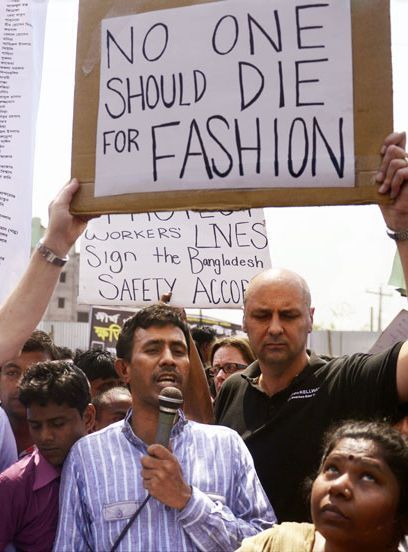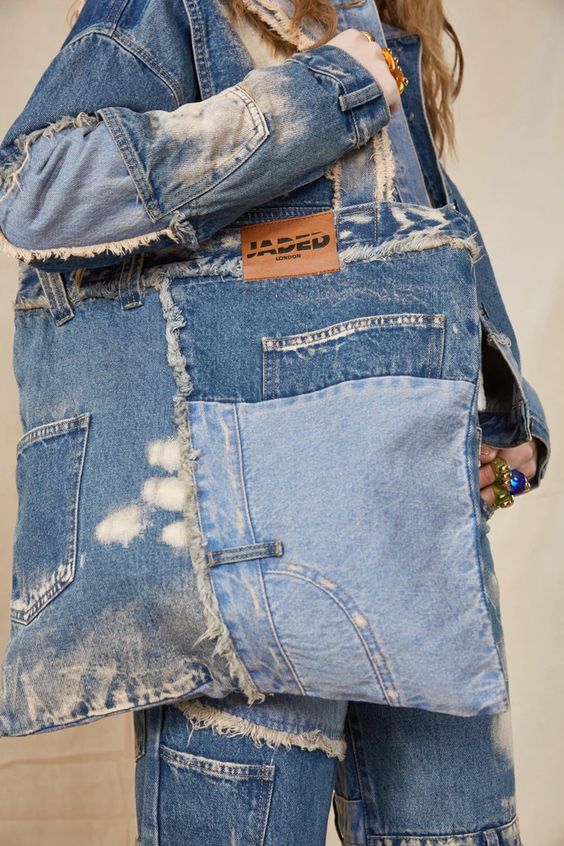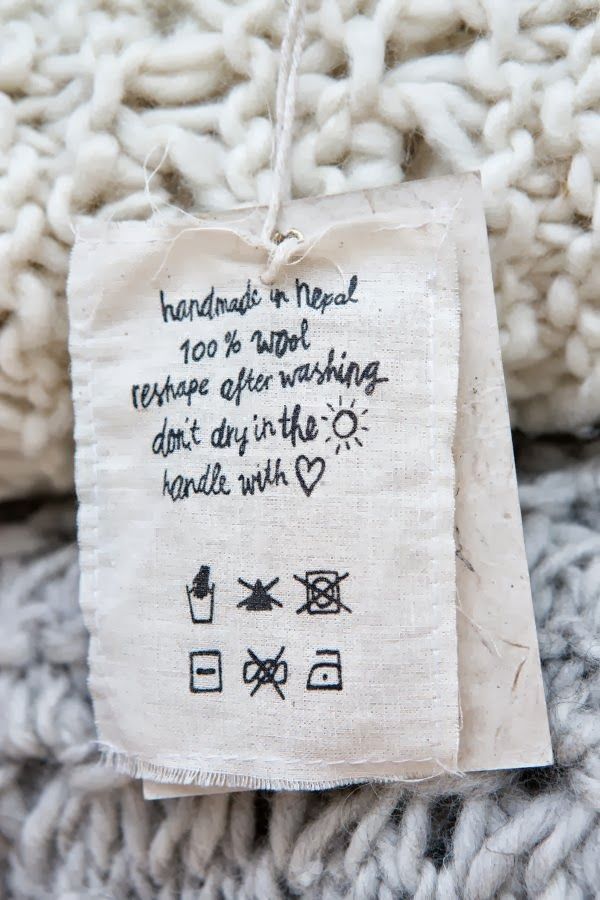
A QR code on clothing labels can stop greenwashing?!
This publication is also available in: Français
Deutsch
Italiano
Español
English (US)
We are currently experiencing a phase of change in the fashion industry, across multiple levers. While the digitization of our society pushes brands to modernize their positioning, particularly with the design and sale of NFTs, the main challenge remains to restore confidence among buyers, who are increasingly wary due to numerous scandals linked to the industry. In an era where awareness is growing regarding environmental and social issues, it is becoming crucial to reassess our own consumption of fashion, with a growing demand for transparency and honesty from brands.
To take a step forward, the application of a QR code on clothing labels, providing greater traceability, has been made mandatory for large brands since January 2023. But is this really the solution to limit greenwashing? Can we trust it? Are consumers educated enough about it? Let’s analyze.
Why is transparency essential for brands?
Although the model of fast fashion persists and still finds an audience, we are observing a growing willingness from consumers to approach fashion from a different angle. Namely, a fairer and more responsible vision, aligned with the challenges we are facing, both in fashion and on a global scale.
This is explained by the awakening of consciousness that we have observed over the past few years, encouraged by numerous reports, articles, testimonies, and photos highlighting the alarming state of the textile industry. Present among the most polluting industries, the production of raw materials, the toxic products used for their transformation, and the kilometers traveled across different corners of the world have a devastating impact on the planet. But not only that.

The revelations about the behind-the-scenes in this industry have particularly shed light on the working conditions in sweatshops, as well as the labor of Uyghurs. Revealing the dramatic consequences on the moral and physical health of workers, and even fatal ones, as was the case in 2013, with the collapse of Rana Plaza (Bangladesh).
These revelations have sounded the alarm and opened the eyes to the reality that lies behind many brands. A wake-up call for consumers, who have, in response, changed their consumption patterns, both in the frequency of purchases and in the choice of brands they support.
How are brands adapting to the awakening of consciousness?
Faced with the loss of trust from their customers, who prefer to turn to more responsible and circular modes of consumption, brands have also begun to change. While for some, this new creative direction supports their values, most comply to continue reaching their clientele and attract new buyers, all of whom are now more discerning.
These consumers now prioritize more thoughtful consumption, favoring transparent, local, eco-responsible, and ethical brands. We also see an attraction for second-hand and upcycling, which align with the desire to consume less, and to try to extend the lifespan of pieces.


Thus, we observe brands, some of which are entrenched in the fast fashion model, rethinking their positioning and production axis to fit into this new vision. Like H&M, which is focusing on a circular economy, to limit its impact on the planet and align with new expectations, promoting responsible pieces, access to rental, and recycling and repair solutions, in addition to promoting second-hand through Sellpy.
Repair services are also being rolled out within other groups and brands, such as Net-a-Porter, Selfridge, Harrods, or Beyond Retro, to name a few. We are also observing in-store credit operations for used pieces, in order to better manage their second life.
How to regain trust with a QR code on clothing labels?
In line with these new practices, the AGEC law has recently given a new turn to brand transparency. Since January 2023, brands with an annual turnover of over 50 million euros must apply a QR code on clothing labels to indicate their environmental impact. This obligation will extend over the years to other brands.
After banning the destruction of unsold goods last year, the law is now tackling brand transparency. Similar to the nutriscore and the reparability index, the information accessible via the QR code on clothing labels is intended to inform the buyer in their purchase, and above all, to try to regain their trust by providing data on how a piece is made.

It is thus no longer possible for a brand to project a positive image by merely describing a piece as biodegradable. Now, with this QR code on clothing labels, brands must be transparent about the percentage of recycled materials in the piece. Furthermore, depending on the information provided by the brand, the customer will also be able to know the origin of the raw material, the manufacturing locations, or even the number of kilometers traveled from the fiber harvest to the store. This is to understand the carbon footprint of a piece, and to be able to purchase more consciously.
These labels serve both during the initial purchase and for resale in the second-hand market, to facilitate this transmission.
Why does transparency in the crafting of a piece have its limits?
A question arises regarding the relevance of this QR code on clothing labels, which is the reliability of the data, as well as its quantity.
Although these labels are an ideal tool to enlighten the consumer about the ins and outs of a piece, as well as to restore truth and trust, brands are not obliged to include all characteristics related to its design. This nuances the effectiveness of this approach, which is not sufficiently robust to genuinely be part of a real transparency initiative.
A brand can very well choose to highlight that its piece is made from over 80% recyclable materials, including linen grown in France, while hiding the deplorable working conditions of the people producing it. Thus, it can project a positive image while concealing what the consumer seeks to avoid.
Moreover, being aware that brands often subcontract to factories, which in turn subcontract to other factories, the question of the reliability of the data on the labels arises. The information transmitted throughout the creation of the piece, which constitutes the blockchain, is validated by a dedicated person at each stage of creation. Their honesty is the only factor that ensures the accuracy of the data. However, experts or organizations may be called upon to verify the data and to study the life cycle of the pieces, to understand their environmental impact.
Brands can also turn to companies like Fairly Made or Good Fabric to ensure the control of their data or to assist them in their transition.
Is the QR code on clothing labels suitable for customers?
Of course, for a real transition to occur, the consumer needs to be informed and educated, both about the use of this QR code on clothing labels and its understanding.
To this end, numerous accounts on social media, books, podcasts, and other media are developing to provide information for conscious consumption. However, the majority of consumers remain poorly informed, and this QR code on clothing labels is not easily accessible to them, often being too brief. Moreover, different levels of interpretation must be taken into account when analyzing a piece, particularly to include the entire environmental landscape, as well as the ethical implications and manufacturing conditions.
Thus, some initiatives go further than the mere QR code on clothing labels, by assisting both consumers and brands to establish true transparency about their pieces, and this, in a way that is understandable for all. Clear Fashion is one of these change-makers, offering an app that catalogs over 500 brands, analyzed based on their impact on the environment, humanity, health, and animals. These analyses provide traceability and allow consumers to know the impact of materials. Customers gain access to complete and verified data, enabling them to be certain of the brand’s authenticity. And these brands can thus be supported in their communication strategies.

Although the QR code on clothing labels aims to establish transparency about brands, we find that it remains too superficial and still leaves too much room for ambiguity. It should be made mandatory to share more data, double-checked, both on environmental impact and working conditions, which are currently completely omitted from the mandatory information. This initiative shows us that the road ahead is still long, but let’s inform ourselves to create an impact, even if it’s just on our scale.



